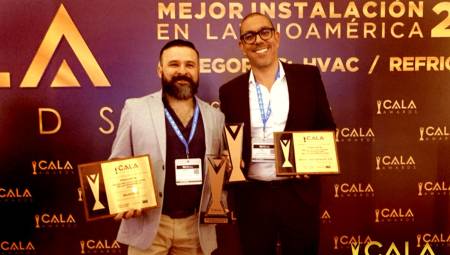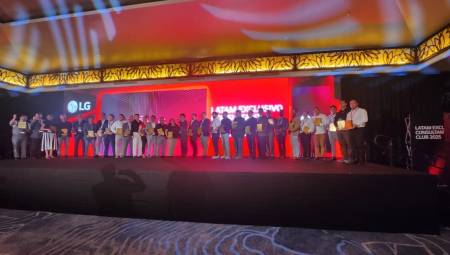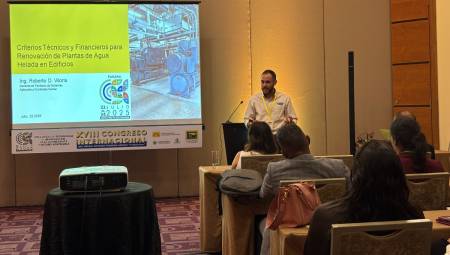 In this first part I will present the history of our industry until the early twentieth century.
In this first part I will present the history of our industry until the early twentieth century.
by Alfredo Sotolongo*
The most economical energy to produce is the one that is saved!
I have been writing some history of our industry for some time and among my books I found one published by ASHRAE in 1994, written by Mr. Barry Donaldson, Mr. Bernard Nagengast and Mr. Gershon Meckler, with the name: "Heat & Cold Mastering the Great Indoors". In my opinion this book presents a very well documented history from ancient times to the 1930s.
I think many colleagues will appreciate the translation of some of the passages contained therein. In this first article I will present the history until the beginning of the twentieth century and in a next writing I will continue to the present*.
Heating
In early civilizations fire had a mystical and religious significance. The fire was maintained and transported long distances in crucibles, containers for melting metals. The priests were in charge of this process because of its religious significance since primitive cultures considered that fire did not belong to this world*.
It is evident that the discovery of fire is seen as the most important step in the evolution of humanity. Heating systems were developed very early on, however, the technology disappeared for about 1,000 years until it was rediscovered by the Romans, who applied ducted central heating to distribute hot air*.
Ventilation
Since ancient times it has been tried to ventilate cities in the hottest months using natural ventilation. Especially in cities located by the sea, the orientation of the streets and the design of the buildings were used to achieve this purpose. There is also evidence of the use of fire for ventilation in places where the breeze was not available. The heat generated by the fire located at the outlet of the duct allowed to induce air from the outside. This was for many years the most common method used by the Romans*.
The development of mechanical ventilation and its applications began in the sixteenth century and there is evidence that forced ventilation was motivated by health reasons. From the sixteenth to the eighteenth century methods were developed to improve the effectiveness of ventilation. The first techniques developed were applied to the most extreme conditions such as mining or where gases harmful to health had to be removed*.
Later, when the importance of using outside air was recognized, ventilation was applied more effectively to the more general needs of industrial, commercial and residential buildings. Ventilation by fire to induce outside air and by fans to mechanically move air were still used*.
Heat and cold
The eighteenth century was the beginning of the practical application of boilers, first to provide power for industrial expansion and later for the heating of buildings*.
The first steam engine was developed in 1712 by Thomas Newcomen in Dartmouth, England, to be used to drain water accumulated in mine tunnels. In 1745, Colonel William Cook presented to the Royal Society of London a diagram where he showed a steam engine to distribute the heat of the kitchen throughout the house. It was not until later in the eighteenth century that others developed more practical heating systems to apply in buildings*.
The 1700s saw science and technology develop in parallel, but in the end they would meet. Many theories emerged and many teams were invented in order to test the theories. The evaporative cooling process was not new, but the observation became more scientific in the mid-1700s. The invention of the thermometer made it possible to quantitatively see the cooling effect for the first time*.
A new era of research arises, that of cold produced by evaporation, made possible by the development of mechanical pumps. The idea of intensifying the evaporative cooling effect using vacuum pumps came to William Cullen, a professor of medicine at the University of Glasgow, Scotland, who is credited with discovering which volatile substances cool if subject to vacuum*.
Before ice was made, the need to preserve food required the use of natural ice, which was imported into Europe from Norway, where it was removed from lakes in the interior of the country and shipped on ships through the ports of Christiania and Krageroe. England was the largest consumer of natural ice for its fishing industry*.
The natural ice industry saw the need to improve the quality of refrigerators where ice was stored to keep food fresh. At first, there were problems resulting from the materials used as thermal insulation. Once these obstacles were overcome, the desired results were achieved and refrigerators were used for many years*.
In more developed countries, the natural ice industry began to decline after 1890 for various reasons. The rapid advance of cities along rivers and lakes brought an increase in pollution dangerous to health. In many cities they banned the use of natural ice grown in polluted lakes and rivers*.
By 1890, mechanical refrigeration technology had progressed to the point that its cost was very effective when ice was produced in industrial quantities, this was not the case for shops and residences. In the brewing industry, mechanical systems to produce ice began to displace the use of natural ice. At the beginning of the twentieth century the use of natural ice was decreasing until it eventually disappeared*.
In the next issue I will continue with the period after 1890 and the beginning of the air conditioning industry.
If you need more information on any of these items, please contact the mail: [email protected]
*= REFERENCE: HEAT & COLD Mastering the Great Indoors.
* President of Protec, Inc., is certified as a professional engineer in Puerto Rico and the state of Florida; has more than 40 years of experience in the application and sale of systems and equipment for energy conservation. He is a member of ASME (American Society of Mechanical Engineers), AEE (Association of Energy Engineers), ASHRAE and was president of the Miami chapter of that association.














